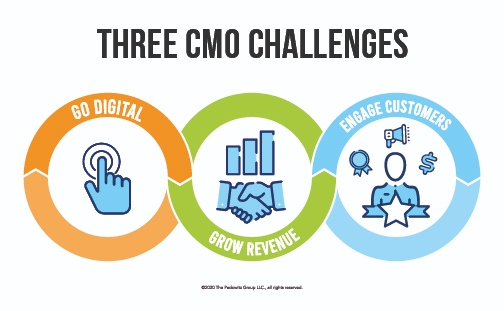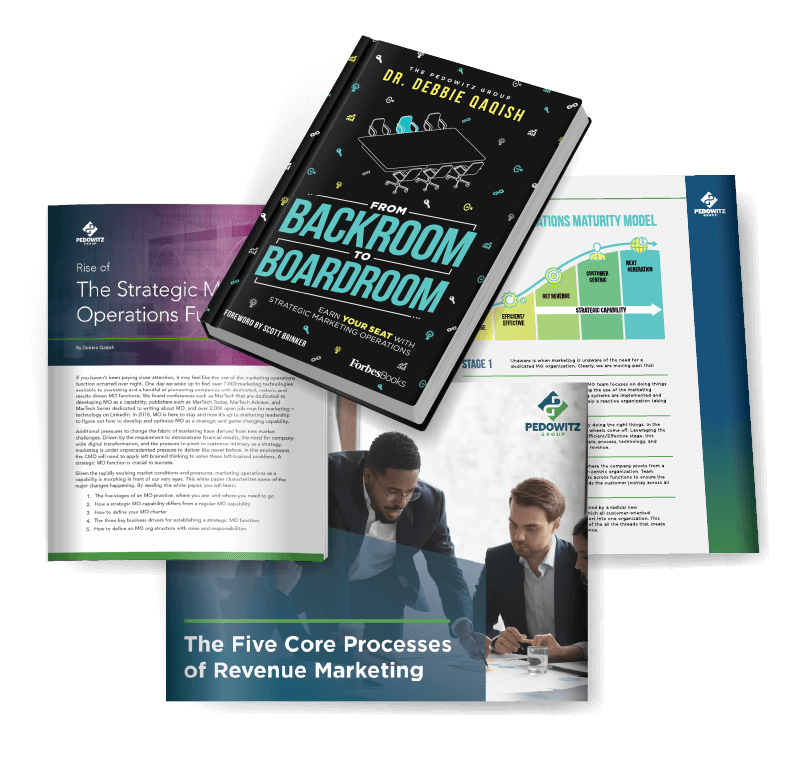Note: I’ve written a follow-up to this article! Take a read here.
Who besides me yelled “Jumanji” when the clock struck midnight, signaling the end of 2020?
It was like we were stuck in an alternate universe with unknown rules, dizzying changes, and disaster constantly nipping at our heels.
The fear, the uncertainty, and the ever-changing landscape created a huge challenge to navigate for everyone – at both a personal and a business level. However, I’m a firm believer that in the midst of great adversity also comes great opportunity for creativity, innovation, and change.
2020 will go in the history books as one of the most taxing ever in the history of modern marketing, but I believe there will also be a strong counter-story: How this crisis created one of the most opportunistic times for modern marketing.
In this blog, I will present an argument that the glass is actually half full, and I’ll provide some guidance on how you can turn this adversity into success.
There are two major parts:
Scroll down to continue reading, or learn even more a webinar we hosted on the topic.
Your Response to the Crisis
I think in terms of models, and for our space in particular, evolutionary or maturity models. I’m seeing a four-stage pattern for how marketing has responded to the Covid-19 crisis. The four stages are: React, Recognize, Reimagine, and Reactivate.
As you read, consider where you are and where you would like to be. This is both a mental state of mind and the actions you’re taking.
React
In March 2020, I was working in Boston on-site with a client for a 30-day period. This client had their entire corporate marketing team at one location (which is a bit unusual), and in order to get things done quickly, it made sense to work on-site with this team. They were experiencing significant shifts in the business and as a result, marketing was transforming from a cost center to a revenue center.
About two weeks into my stay, I show up to the office one morning and it’s like someone has kicked a bed of fire ants. People were scurrying all over the place with extreme urgency. The normally calm and very collected receptionist was holding two phones at once while she was yelling down the hall at a group of people. She informed us that they were closing all of their offices (around the globe) immediately and it was time for me to go back to Atlanta.
The company was in a reactionary mode to the pandemic. The marketing team was in a reactionary mode to the announcement. That announcement made by their CEO caused this entire organization and my team to go into pure react mode. The react mode is a stimulus mode where you aren’t thinking clearly and the first responses are emotional, unstructured, and a bit out of control.
In this mode, questions abound. What is this? Why are we doing it? How long will it last? What does this mean for my job? What does this mean for my pay? What does this mean for our deliverables? What does this mean for marketing? How will I work from home? What do I do with the kids?
This is a natural initial response and I think everyone has experienced some flavor of this kind of reaction. Now that we’ve all had a few months to work and respond to the crisis, things have begun to settle down and we have moved into the next response stage – Recognize.
Recognize
After initially reacting to an event, there is a period of recognition of the full situation and the impact of the situation. With a bit more breathing room and analysis, it is time to recognize the full impact of the crisis on employees, customers, and the business.
And, it’s time to be empathetic.
This is Hard
First, recognize this is hard for everyone – employees, customers, and your business. This is not business as usual. Your employees are worried and are having to work with a lot of unknowns and having to adopt new work habits. This is hard stuff. During this period, it is important for leadership to be highly communicative, transparent, and team-oriented.
Next, recognize this is also hard for your customers. The way they want to do business may now not exist. Recognizing their struggles and how they need to re-orient their business will help you realign to their evolving needs.
Finally, it is not only marketing that is struggling. Recognize that every part of your business is experiencing a tsunami of change. Your ability to communicate across functions has never been more important.
The Earth Shifted Beneath Your Feet
Another form of recognition is that marketing is forever changing and things will not go back to the way they were before. What you once thought was critical or was the only way to do something, has shifted. Often, this results in surprising benefits.
I was recently talking to a marketing executive about how they shifted their annual face-to-face customer conference to a virtual conference. Their annual conference had been historically important to closing business. The switch to virtual produced numerous benefits:
- First, registration increased by almost fourfold. This resulted in a large base of prospects and customers for closing business and for nurture streams.
- Second, having a virtual conference produced an online asset for many others to visit for information about their industry. This became a long-term acquisition and nurture asset.
- Finally, the company saved a LOT of money that went back into marketing for other digital initiatives.

Your Glass is Half Full
I’ve heard many examples of how marketing has become the hero in the company during this pandemic. Take the example above about the company switching from a live to a virtual conference. Because of marketing’s ability and readiness to step up, they were able to “save” the pipeline and work with sales to digitally engage prospects and customers in new and thoughtful ways.
Marketing has a unique opportunity to grow and stretch… and be a hero!
In a recent study from The CMO Survey, 62.3% of participants reported the marketing function increased in importance during the pandemic. Brand building and customer retention through digital, mobile, and social strategies were key to the heightened role.
Reimagine
With this recognition, some trial by fire, and “new normal” metrics, it is time to re-imagine what marketing can do and what marketing can be. Consider these new market metrics and how they affect what you can do:
- Internet usage has grown by 50-70% and screen time is at an all-time high (Forbes, 2020)
- 83.8% of marketers report their customers are placing a higher value on digital experiences (The CMO Survey, 2020)
- Face-to-face selling has dropped dramatically and revenues are down 17% on average of 17% (The CMO Survey, 2020)
- 79% of businesses report an increase in digital transformation budgets (Twillio, 2020)
With a set of “new normal” baseline metrics and data, marketing can set a new direction, create new models, re-engineer outdated processes, and create a new identity as a business driver.
Related: Make sure your tech is optimal with our martech consulting services
Reactivate
After re-imagining, marketing can re-activate in a new form. One that is tied to the business, drives critical business results, and is the hero of the day. In this execution stage, you need agility, speedy results, and constant mini-experimentation. You may find yourself doing more smaller initiatives to find out what works in the new world. It is not the time for grand, long-term plans. It is a time to find new ways to connect with customers, retain customers, engage prospects, and share critical findings from these interactions.
The Re-Imagine and Re-Activate stages are accelerated, because in this crisis, many of the traditional inhibitors to change are gone. In Twillo’s report on the impact of Covid-19 on digital engagement, participants listed the following top barriers are now broken down:
- 37% of respondents said getting executive approval
- 37% said lack of clear strategy
- 35% said reluctance to replace software
- 34% said insufficient budget
- 34% said lack of time
I always like to know where I am so I can best plot my go-forward course of action. As you consider the Crisis Response Model, really think about where you and where you would like to be.
Now, let’s outline how to plot your course forward.
Crafting Your Opportunity from the Crisis
The CMO’s three biggest challenges – digital transformation, customer centricity, and revenue – can now be viewed in a new light. All three challenges have exponentially increased in importance and criticality to the business, which presents unique and game-changing opportunities for marketing.

The Unique Opportunity in Digital Transformation
I wrote this in 2018:
Let’s be clear. Digital transformation is now a strategic imperative, not a nice to have. While 87% of companies view digital transformation as a way to create competitive advantage, 27% of senior executives call it “a matter of survival.” Even with this level of importance to the future of the business, executives estimate they are only 25% complete in their digital transformation.
Digital transformation is at the top of every CEO list for Christmas.
Now, take what I said and now multiply that by a factor of 10x as a result of the pandemic! Twillio surveyed business leaders in order to gauge the impact of Covid-19 on digital engagement and transformation. They said “Covid-19 was the digital accelerant of the decade” and the numbers supported this proposition:
- 97% of the respondents said Covid-19 had sped up digital transformation efforts (68% said by a great deal)
- Companies said Covid-19 has accelerated their digital communication strategy by six years
- 92% said transforming digital communication is extremely or very critical to address Covid-19 business challenges (46% said it is extremely critical)
Along with this shift comes more budget and more focus on all things digital.
- 79% indicated Covid-19 increased the budget for digital transformation (Twillio, 2020)
- The CMO Survey reported an increase of 10% in digital marketing budgets
The impact: 92% of marketers report expanding digital channels with a corollary increase in spend for mobile (70% growth) and social (74% growth).
With fewer inhibitors to change and a massive market shift, companies are highly motivated to digitally transform. This is a key initiative that marketing should be front and center on given their focus on customers and revenue. This is a unique opportunity for marketing.
Related: Drive greater value with your marketing operations

The Unique Opportunity in Customer Centricity
I wrote this in 2017 (it was re-published on MarTech Today in Q1 2018):
CEOs are waking up to the reality that we live and work in the customer-engagement economy and the customer is in control. This has forced a pivot away from being product centric and to being customer- centric.
Customer experience is the new competitive battleground and by 2020, will overtake price and product as the brand differentiator. Plus, customer experience pays big. Who wouldn’t want to see a 42% improvement in customer retention, 33% improvement in customer satisfaction and 32% improvement in cross-selling and up-selling (Genysis, 2017)?
Now, take what I said and multiply this by 10x as well!
What has become blazingly clear from the pandemic is new customer behaviors require new business models – now. Customers are online more than ever and expect optimal customer experiences, no matter who they are dealing with. The CMO Survey (2020) reported that 83.8% of marketers said their customers are placing more importance on digital interactions.
This is the new normal.
Sales people have been somewhat disintermediated from customers and marketing is picking up the slack by creating digital relationships. Consider these supporting stats:
- 60.8% of marketers report shifting resources to build better customer interfaces (The CMO Survey, 2020)
- More marketers are focusing on customer retention (32.6%) than on net new customer acquisition (14%) (The CMO Survey, 2020)
- 95% are looking for new ways to engage customers (Twillio, 2020)
- 53% of marketers are adding new channels (Twillio, 2020)
- Spending on customer experience activities has risen 10% since February 2020 (The CMO Survey, 2020)
I’ve often heard the adage – “he who owns the customer calls the shots.” Sales loves to say this.
But they need to be careful of what they say. In this new environment, marketing is poised to be the de facto expert on the customer in the new normal. Through increased engagement and the ability to track, analyze and report on customer insights, marketing has a unique opportunity to help the business thrive during this challenging time.
The Unique Opportunity in Revenue
There have been a few times in recent history when market changes caused a great deal of disruption in the sales process. The first was the rise of the internet. As basic as this sounds, before we were an internet-focused world, the customer had to lean on sales as the ultimate conduit of information.
Now that we’re in a swipe-left world and the customer is 80% through their buying journey before speaking to sales, sales had to change. This is when marketing and marketing automation also emerged to address the new relationship gap. (Related: Implement a better lead management process)
A second massive change has hit the sales organization – little to no face-to-face interactions. In addition, increased internet usage and screen time has set up an environment where sales success is lagging. One large company I know even reduced sales quotas because the reality was so different from the original revenue plan.
Multiple studies indicate that marketing is spending more time on building a brand that connects with customers and on other customer retention activities, even at the expense of net new acquisition.
The CMO Survey (2020) reported the top five marketing objectives during the pandemic: Acquiring new customers (14%) was number 4 and ROI (3.6%) was number 5.
I think this is a mistake.
While buying cycles have slowed and more customers are looking for a deal, the opportunity to use digital strategies to plump up the pipeline, I believe, still exists and is an incredible opportunity for marketing. Regardless of what you do as an organization, nothing matters more at the end of the day than the ability to generate revenue for the company.
Given the focus on digital transformation and customer centricity, marketers need to keep their eye on the bottom-line number as they find new and exciting ways to drive revenue.

Think like a sales organization. Track and report like a sales organization. Act like a sales organization.
This is your unique opportunity.
Conclusion
So, I’ve given you a lot to think about! Take action by understanding how you are responding to the pandemic. Then, plot your course forward with the three unique opportunities, and become the hero in the story.
I do want to acknowledge the pain and suffering our country is experiencing, and this blog isn’t about profiting from the pandemic. Not at all.
Rather, the pandemic has forever changed so many things about us personally and how we think about and run a business. In this change, marketing has the opportunity to play a role that affects people and business. Marketers are resilient, creative, and passionate and I look forward to all the stories of innovation, struggle, and success as we continue to transform marketing.
Now, I invite you to continue moving forward:
- Connect with me on LinkedIn or send me a question – I’ll be happy to answer!
- Dive deeper into some transformation failures with this blog post or view other related resources
- Accelerate your customer engagement with our customer experience and digital transformation consulting services

